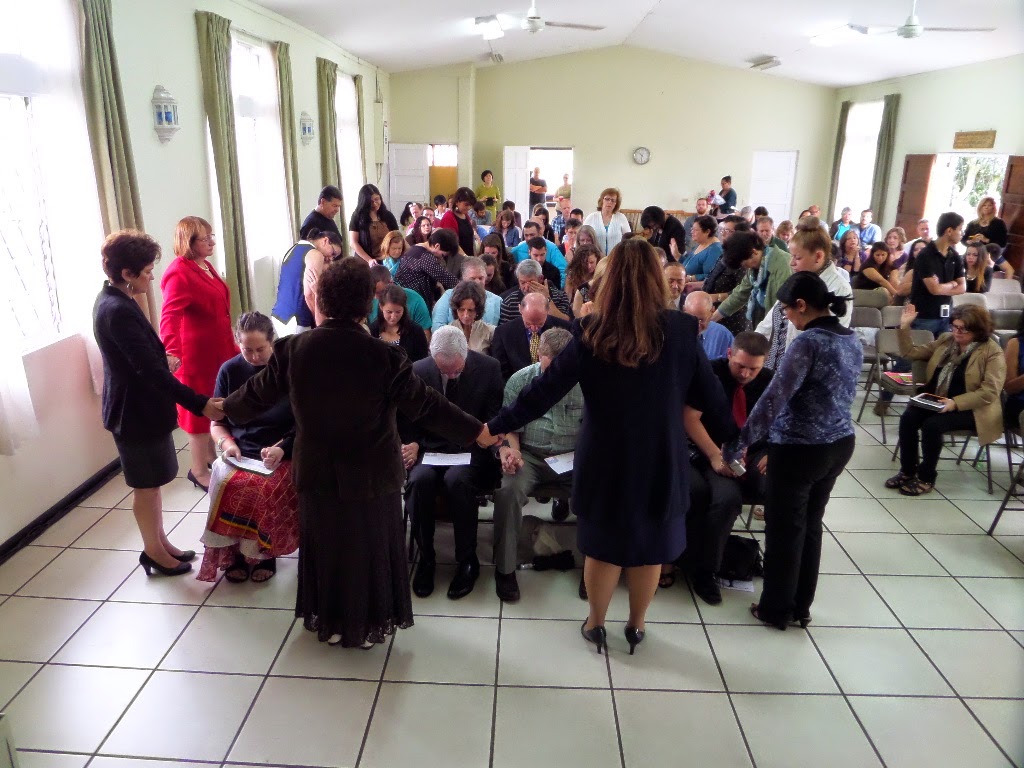The graduation ceremony was really nice. The first part of the ceremony was the flag march: the flag of each country of ministry was brought in by one of the students serving in that country. These are the different countries that this group of students will be going to: Chile, Costa Rica, Ecuador, Honduras, Paraguay, Mexico, Peru, Panama, and El Salvador. (hopefully I didn't forget any).
 |
| With the Ecuador flag |
 |
| Almost ready to get our names called |
 |
| Our grand entrance |
After we all were introduced, the Director of the school gave a welcome followed by one of the teachers sharing memories of the graduating students.
Then, one of the graduating students gave a speech about his memories and experiences at the school and living with a Tica (Costa Rican) family. This was followed by a pastor from a local church giving a message and a challenge to the students as we go to our countries of service.
Then it was time to get our diplomas and certificates.
Finally, we had a closing prayer, which was very special. One of the teachers led the prayer and asked all the other teachers present to make a circle around the graduating students.
After the ceremony, there was a time of refreshments - nachos and brownies! Great way to end the morning.
It was such a blessing for us to be students at this Christ-centered school. Each teacher values what they do and considers it a ministry to teach Spanish to missionaries.


















































